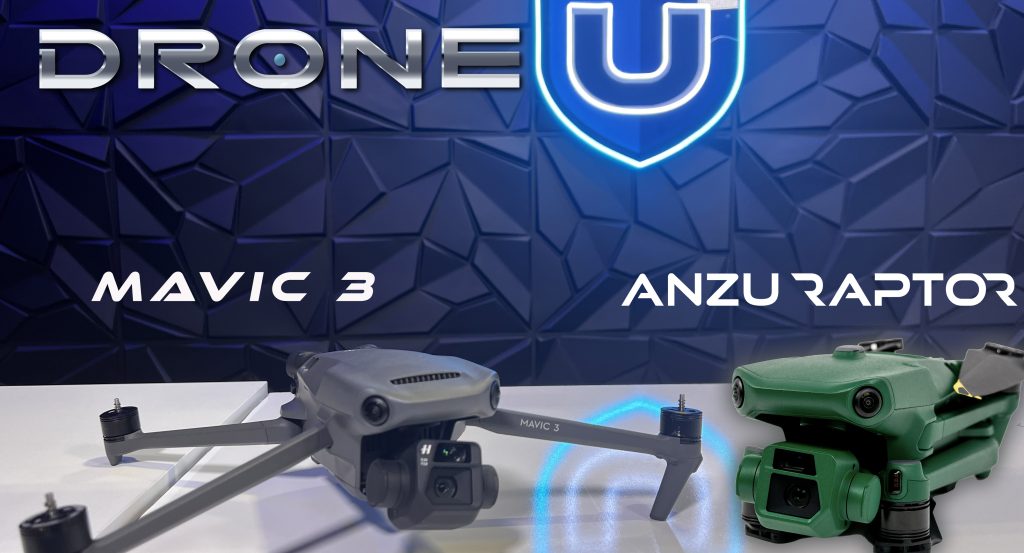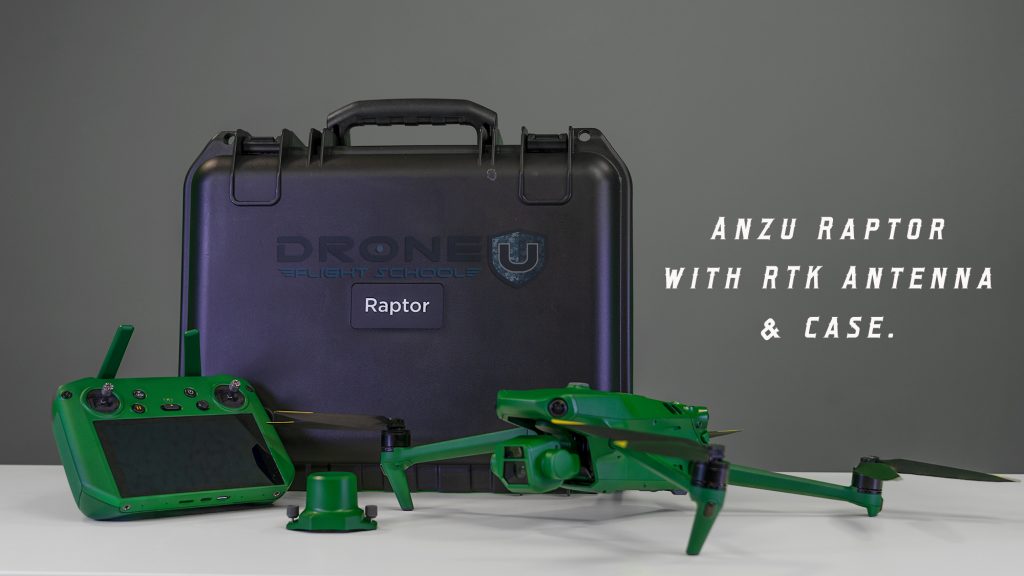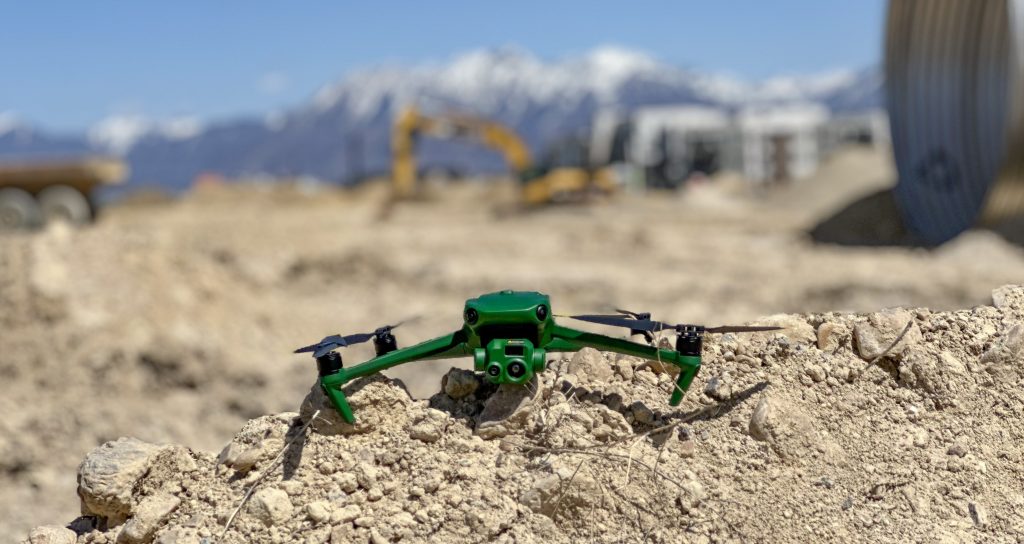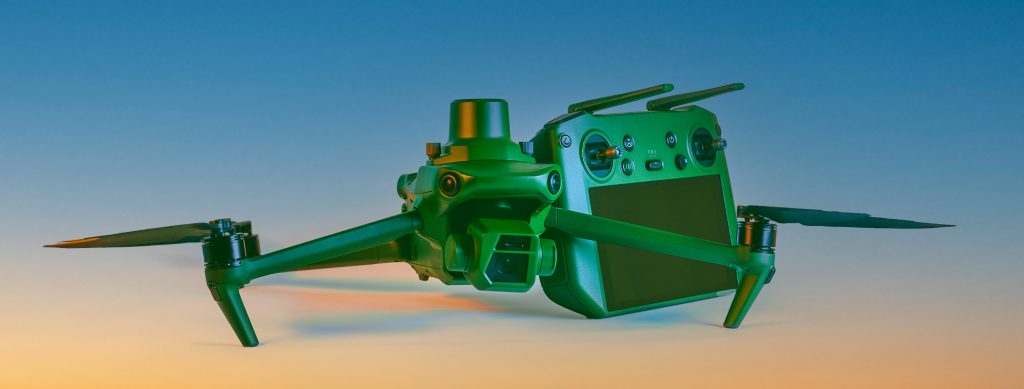
Today, Anzu Robotics has released two new drones, the Raptor and Raptor T. These are Mavic 3 lookalikes, but owned by Americans and sourced from Malaysia.
In a bold move blending American software development with Malaysian manufacturing expertise, Anzu Robotics has officially launched its latest innovations in aerial technology—the Raptor and Raptor T drones.
Anzu states the drones are “Developed through a strategic licensing agreement, the Raptor-series drones are quality and mature aerial platforms with powerful sensing capabilities.”
The Anzu Robotics Raptor bears a striking resemblance to the well-known Mavic 3 Enterprise and Mavic 3 Thermal drones, yet they carry a distinct badge of American ownership and support.
Anzu Robotics Raptor, A Mirror Image with a Twist,

At first glance, the specifications of the Raptor and Raptor T models align closely with their Mavic counterparts. Both drones boast the same impressive capabilities that have made the Mavic series a favorite among drone enthusiasts and professionals.
However, Anzu Robotics has taken things a step further to ensure that these drones are not merely clones but are enhanced versions tailored to specific user needs. While the Anzu Raptor drones looks just like the Mavic 3, these drones have very different operating systems.
Unlike the Mavic drones that utilize the DJI Pilot 2 app, or a variety of third-party applications for their operational needs, the Anzu Robotics Raptor stands apart with its entirely American-developed software.
This software has been crafted by the minds at Aloft, a U.S.-based app development company known for its FAA supporting LAANC applications. This transition not only emphasizes Anzu’s commitment to national security and data privacy but also ensures that users have a seamless and integrated flying experience with software that is finely tuned to the hardware.
Amidst growing concerns over data security related to foreign-manufactured technology, Anzu Robotics seeks to ensure peace of mind by hosting all data on servers within the United States and operating under stringent compliance with Federal Aviation Administration (FAA) regulations. The integration with Aloft’s Air Control app not only facilitates pre-flight checklists and ensures compliance with national airspace regulations but also provides instant LAANC authorization for operators. (We still prefer UA Sidekick – they don’t sell your data.)
Safety, Security, and Compliance
The emergence of Anzu Robotics Raptor in the drone market is timely, as industry insiders are anticipating a potential ban on Chinese-manufactured drones in the United States, spurred by concerns addressed in bill HR 2864. This legislative move reflects growing apprehensions about data security linked with foreign tech, proposing a substantial shakeup in the drone industry that could impact millions of business owners.
Anzu Robotics has strategically positioned itself to bridge this imminent gap by offering mass-produced, highly capable drones at affordable prices—an American alternative designed to maintain operational continuity for businesses reliant on drone technology.
Anzu pledges to uphold the security standards necessary for compliant operation across U.S. skies.
However, caution remains paramount; similar to the recent arrival of Specta Drone, (Not built by Anzu) which initially promised an experience akin to the Mavic Air 3 but was later found to contain remnants of DJI software, raising concerns about its authenticity and security.
So, as @d0tslash and @konrad_it already investigated, the Specta drone from Cogito is most likely just and rebranded Air 3. Seems DJI wants to get around the “Countering CCP drones act” from @EliseStefanik and @RepGallagher. So I will show you now what is in the drone firmware 1/x
— Andreas (@Bin4ryDigit) March 25, 2024
As the drones run a Frankenstein’ed Android OS, they usually have the Android prop files. This is the build.prop from the Specta drone firmware. see the wa233, that is dji’s Air3 model number. it even still says dji is the manufacturer in this file. 4/x pic.twitter.com/S6nCuuVHEA
— Andreas (@Bin4ryDigit) March 25, 2024
Drone U, committed to ensuring transparency and reliability, awaits a thorough security audit by skilled systems analysts to verify that Anzu’s drones genuinely embody the secure and robust alternative as outlined by the NDAA and potentially by HR 2864. This vigilance aims to uphold integrity in our recommendations, ensuring that our community receives accurate, trustworthy information about the drones they rely on.
Market Shift with Anzu Entry?
Imagine the potential industry shift if Anzu’s drone fully realizes these ambitions: components entirely sourced from Malaysia, software that securely manages data within U.S. borders, and a system devoid of vulnerabilities. Such achievements could significantly alter the drone landscape in the United States, challenging the current dominance of NDAA-compliant drones typically offered by manufacturers like Skydio, Freefly Systems, and Parrot.
While these drones set a high standard in compliance and security, they are not mass-produced, which raises questions about their ability to meet the market demands that Anzu could potentially satisfy through its strategic licensing agreements and production capabilities.
This scenario underscores the broader implications of Anzu’s market entry — should they succeed, they could shift the balance of power in the drone industry by proving that high compliance and mass production are not mutually exclusive. This could redefine what businesses and consumers expect from domestic drone manufacturers, potentially setting a new standard for how drones are produced and secured in compliance with American regulations.

Technical Specifications and Capabilities
Both the Anzu Raptor and Raptor T mimic the Mavic 3’s advanced technical specifications:
- High-Resolution Cameras: The Raptor boasts a dual-camera system featuring a 4/3-inch 20MP wide camera (mechanical shutter) and a 1/2-inch 12MP CMOS sensor, offering up to 56x hybrid zoom capabilities. The Raptor T adds to this with a 640 x 512 high-resolution LWIR thermal imaging payload alongside its 1/2-inch 48MP and 12MP cameras, perfect for detailed thermal imaging.
- Extended Flight Time and Range: With up to 45 minutes of flight time and a range of 9 miles, these drones are designed for endurance and distance, catering to a variety of missions from industrial inspections to search and rescue operations.
- Precision Navigation: The inclusion of an optional RTK module enhances the precision of both drones, making them ideal for tasks requiring high accuracy.
- Price Point: $5,099 for the Raptor and $7,599 for Raptor T
Technical Questions
While Anzu Robotics promises a drone that mirrors the capabilities of the Mavic 3 Enterprise, potential drawbacks stemming from its reliance on Aloft’s proprietary software could shape user experience and operational flexibility. Key questions arise regarding the drone’s adaptability to varied and specialized uses:
Automated Mapping Missions: One of the critical features for commercial drone operators is the ability to perform automated mapping missions, which are essential for industries such as agriculture, construction, surveying and inspections. The Mavic 3’s ability to easily integrate with numerous mapping software options makes it highly versatile. It remains to be seen whether the Raptor’s dependence on Aloft’s software will allow for similarly efficient automated mapping, or if users will encounter limitations in customization and functionality.
Compatibility with Third-Party Apps: Another concern is the drone’s compatibility with third-party applications, which greatly expand a drone’s utility across various fields. Popular applications like DroneLink, known for its detailed cell tower inspections, and DroneDeploy, famous for its mapping and 3D modeling capabilities, are staples in the drone operation toolkit. If the Raptor does not support these third-party applications, it could significantly hinder its utility for professional users who rely on these tools for precise and specialized tasks.
Operational Flexibility: The extent to which users can replicate the experience of using a Mavic 3 with the Raptor will largely depend on the openness of Aloft’s software to various user demands and scenarios. The ability to adapt to a wide range of commercial needs, from cinematic captures to detailed industrial inspections, without compromising on performance or security, is crucial. If Anzu’s Raptor Drone can match the capabilities of the Mavic 3 Enterprise but add security, the market will have forever changed.
Given these potential limitations, the true test for the Raptor will be its performance in real-world conditions. Drone U is eagerly anticipating the opportunity to rigorously test the Raptor, examining how well it integrates with essential software and performs across a spectrum of commercial drone uses. Our goal is to provide our readers (and listeners) with comprehensive feedback on whether the Raptor truly lives up to its promise as a secure, versatile, and high-performing drone that is compliant with American manufacturing and data security standards. Only then can we definitively assess whether it stands as a viable and competitive alternative in this dynamic drone market.

Anzu Raptor with RTK Antenna and Remote







Add Your Comment